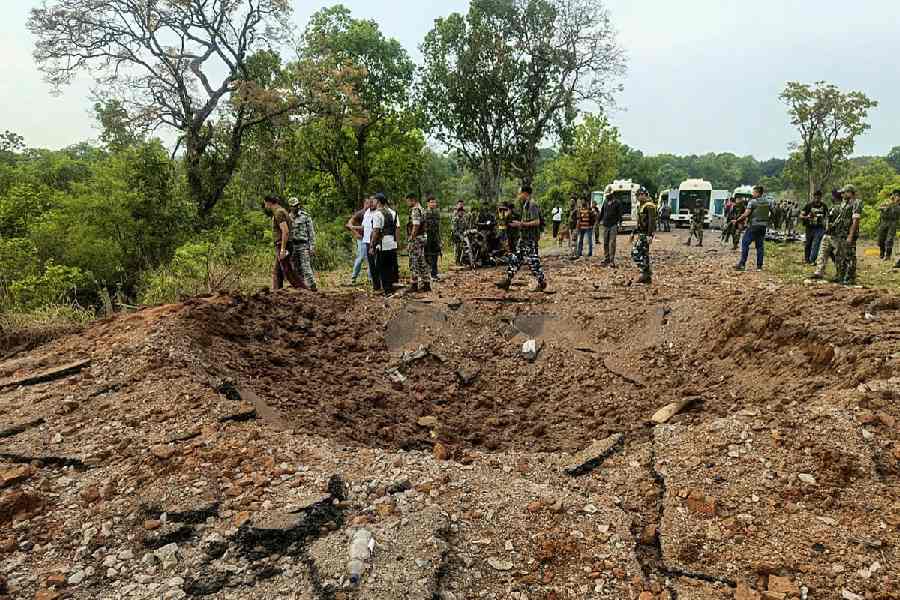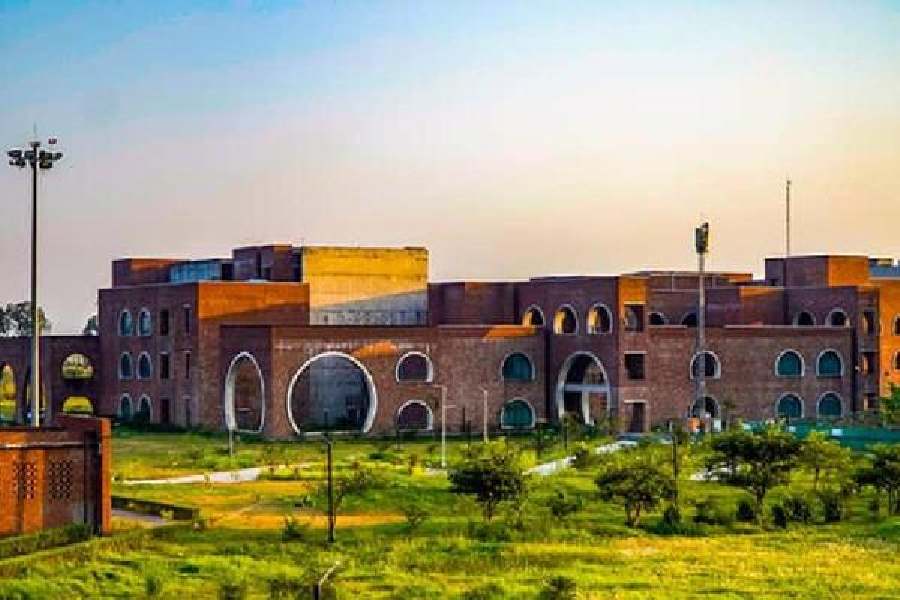The silhouette of dark green, almost black, ranges of hitherto forbidden forested hills behind the row of beautiful, thatched huts of the Nambi village nestled deep in the interiors of Bijapur in southwestern Bastar bear testimony to the fable of the Dandakaranya straight from the Ramayana. What is Black Forest to the outside world is Kare-Gattu for the Telugu-speaking population on either side of the hills, 60 kilometres in length in north-south direction and stretching about 20 kms from east to west.
Nambi’s Gond and Dorla tribal households have lived with the hills for ages. What is new is a bloody war, and many new stakeholders interlocked in the battle for Bastar. On the one hand, is the presence of an armed battalion of an outlawed political front and, on the other, the road running parallel to the hills is dotted with the fortifying presence of the security establishment. The former is trying to hold fort and persist with a vanishing dream of dislodging the Indian State to establish its own government as part of a protracted and armed revolution. The latter is carrying out the State’s writ to disarm and exterminate the movement. The battle is headed for a decisive phase.
Nambi, and indeed tens of villages and hamlets across the tribal hinterland of Bastar in Chhattisgarh, is a classic symbol of how things stood with regard to the security scenario two decades ago and how they are today with security forces penetrating deep into Maoist strongholds to resolutely hit at will the cadres that once held the sway over hundreds of villages. This region is bigger than the size of Kerala and replete with forests, hills, rivers, and an array of major and minor mineral deposits. For over two decades, Bastar has been the citadel of the Maoists, a kind of liberated zone, where the armed cadres moved freely without any resistance and enjoyed the trust of the thousands of locals. That seems to be changing decisively as this writer found on his recent journey through the tribal hinterland. Like Nambi, many villagers are coming out of the shadow of protracted violence, persistent fear and silence.
The intensifying operations by the security forces began yielding results in late 2023, nearly 14 years since the beginning of what was then called Operation Green Hunt, a clear-and-hold strategy that came with many setbacks, fatal losses, and huge controversies around the killings of innocent tribal citizens. On May 21, the security forces killed the general-secretary of the banned outfit, Communist Party of India (Maoist), Nambala Keshava Rao aka Basavaraju, during a three-day operation in the Abujhmad region, long considered to be a sort of headquarters of the armed resistance. That is a watershed moment in the bloody history of this movement given that it was next to impossible for the forces to enter the Abujhmad area.
Tens of Maoist cadres have surrendered in the last two years or been killed and the party’s area of domination has shrunk to some limited pockets, both within Bastar and across the other left-wing extremism affected states. The outfit’s central committee has been reduced to three members from over 20 and the military formations have splintered into small groups, waiting for a breather that looming monsoons might provide them with, for security operations usually pause during the rains.
It is now for the State to build trust with Bastar’s impoverished tribal communities with care. Because if the mining lobby and big businesses aggressively exploit the region and its minerals with their deep nexus with the political-administrative machinery, as early signs indicate they might, it will not augur well for local tribal populations, who are after a long time ready to switch away from the armed rebels and finally embrace the Indian State.










